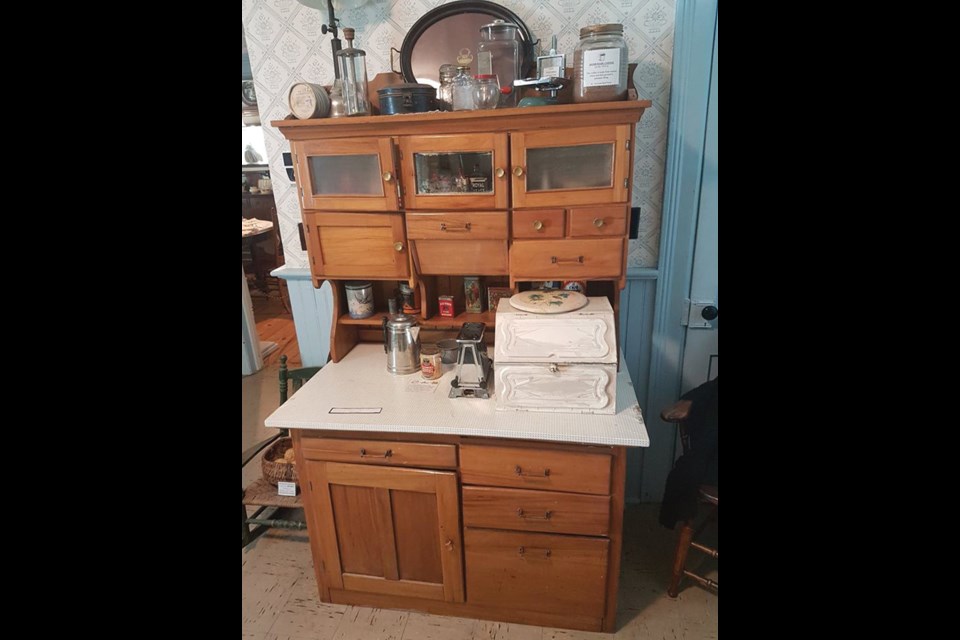In an effort to educate the public about particularly interesting parts of the museum collection, the museum occasionally compiles reports on specific artifacts deemed to have particular merit. Today we are taking a closer look at an artifact that was once a ubiquitous feature of kitchens across North America, the Hoosier cabinet.
The Hoosier cabinet is a style of freestanding cupboard incorporating shelving, a work surface and bins for the storage of bulk goods. This style of cabinetry was popular from the late 19th century, gradually declining in popularity by the 1920s and eventually disappearing from use.
Until the 1920s few homes had built-in cabinets in their kitchens and multifunction cupboards like the Hoosier were very popular.
They combined storage space with a work surface, which allowed cooks to prepare food without having to walk across the kitchen. Although this sounds like a relatively minor inconvenience, manufacturers at the time played up the efficiency that users of Hoosier cupboards enjoyed, marketing pamphlets boasted of a savings of nearly 1600 steps per day.
Before the advent of kitchen cupboards, the work surface on the Hoosier was often the only workspace available in a kitchen aside from the kitchen table.
As time went on, additional features were added to the Hoosier cabinets, disappearing cutting boards and ironing boards were added. Spice racks and expanded storage bins became standard parts of the design as well.
The name
The name Hoosier comes from the Hoosier Manufacturing Company which began production in 1898 in Albany, Indiana. The company was the largest and most successful producer of this style of freestanding cupboard and the style at large came to be known as Hoosier.
The brand name Hoosier soon came to be used as the generic name for the style of product, similar to brands like Kleenex or Ski Doo.
Other popular manufacturers of the time included the Cambel-Smith-Ritchie Company, McDougall and Coppes Brothers and Zook. Most of these manufacturers were also based in Indiana, so the application of the name Hoosier to the style may have been more to do with the broader use of the nickname Hoosier for residents of Indiana rather than an association with the Hoosier Manufacturing Company in particular.
As built-in kitchen cabinets grew in popularity, many manufacturers struggled to adjust to the changing marketplace. The Hoosier Manufacturing Company transitioned into producing the same kitchen cabinets that threatened their market for stand-alone cabinets.
By 1930 Hoosiers were seen as old-fashioned and demand steeply declined. Many manufacturers closed their doors. Today they are highly valued as collectors’ items and demand for authentic Hoosier cabinets often sees counterfeiters applying false Hoosier Manufacturing Company nameplates to cabinets built by less well-known, and therefore less valuable, firms.
Visitors to the museum can see our Hoosier style cabinet on display in the kitchen on the first floor.




